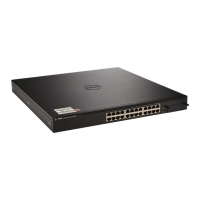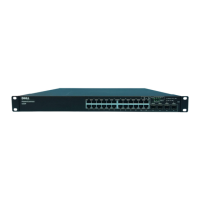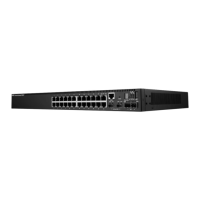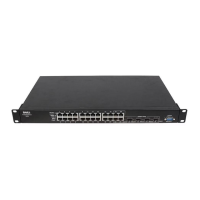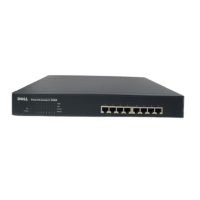Configuring System Information 241
–
Neighbor State Change
— Signifies that there has been a change in the state of a non-virtual
OSPF neighbor. This trap should be generated when the neighbor state regresses (e.g., goes from
Attempt or Full to 1-Way or Down) or progresses to a terminal state (e.g.,2-Way or Full). When a
neighbor transitions from or to Full on non-broadcast multi-access and broadcast networks, the
trap should be generated by the designated router. A designated router transitioning to Down will
be noted by OSPF Interface State Change. The factory default is disabled.
–
Virtual Link Interface State Change
— Signifies that there has been a change in the state of an
OSPF virtual interface. This trap should be generated when the interface state regresses (e.g., goes
from Point- to-Point to Down) or progresses to a terminal state (i.e., Point-to-Point). The factory
default is disabled.
–
Virtual Neighbor State Change
— Signifies that there has been a change in the state of an OSPF
virtual neighbor. This trap should be generated when the neighbor state regresses (e.g., goes from
Attempt or Full to 1-Way or Down) or progresses to a terminal state (e.g., Full). The factory
default is disabled.
Configuring OSPFv2 Traps Using CLI Commands
For information about the CLI command that performs this function, see the
SNMP Commands
chapter
in the
CLI Reference Guide
. The following table shows the equivalent CLI command you use to
configure OSPFv2 traps.
OSPFv3 Trap Flags
The OSPFv3 Trap Flags page is used to specify which OSPFv3 traps you want to enable or disable.
When the condition identified by an active trap is encountered by the switch, a trap message is sent to
any enabled SNMP Trap Receivers, and a message is written to the trap log.
To access the OSPFv3 Trap Flags page, click System
→
Trap Manager
→
OSPFv3 Trap Flags in the
navigation tree.
Table 6-55. OSPFv2 Trap Command
CLI Command Description
snmp-server enable traps ospf Enables OSPF traps.
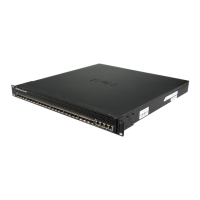
